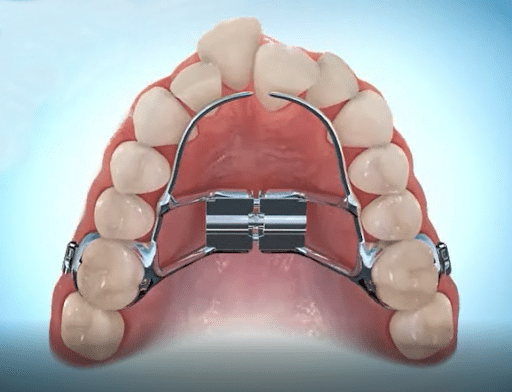
Guide to Palate Expanders and Braces
By Dr. Tyler Coles – Premier Orthodontics July 21, 2023
Table of Contents
Even if you have heard of a palate expander, also known as a Rapid Palatal Expander (RPE) or Hyrax Expander, from someone you know or an orthodontist, you may still have a few questions about how it works, what it does, and whether it’s REALLY necessary.
In this article, we’ll explain, in detail, everything you should know about how palate expanders work, so you can decide if it’s the right appliance for you or your child as part of their orthodontic treatment.
What are Palatal Expanders and What Do They Do?
A palatal expander is an orthodontic appliance that is used during orthodontic treatment that helps to expand or widen the upper teeth. There are different types of expanders used for orthodontics, but the most common, and the one we’ll discuss in this article is the Rapid Palatal Expander or RPE.
Click below to watch a video and see how an RPE works:
Here’s how it works. First, the rapid palatal expander is cemented onto the teeth using an orthodontic adhesive. Once inserted, the patient or patient’s parent will activate the appliance periodically by using a small tool to turn a screw in the appliance.
When this small screw is turned or activated, the appliance will expand by a small amount. Most rapid palatal expanders will expand by ¼ of a millimeter each turn.
As the rapid palatal expander is activated and begins to widen out, force is applied to the teeth on the upper arch. This gentle pressure will move the teeth, and in younger patients actually separate the bones of the upper jaw, expanding the palate.
Your orthodontist may recommend a removable palate expander, these are less common but may be used. Most orthodontists (and parents) prefer the glued-in palate expanders as the removable palate expander requires compliance from a young child’s permanent teeth.
This may sound a bit scary to separate the bones of the palate, but when done according to the proper protocol, it is safe and results in only minimal discomfort.
Is a Palate Expander Really Necessary?
There are many reasons why an orthodontist may recommend a palatal expander during your orthodontic treatment. The most common reason is if the upper jaw is too narrow relative to the lower jaw. If this occurs the teeth won’t fit together properly, and will usually result in a crossbite.
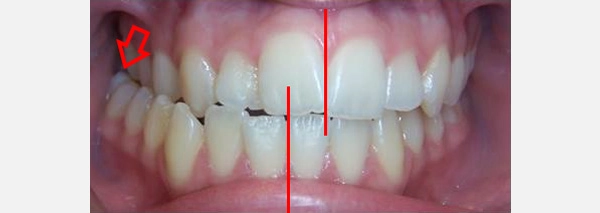
Crossbites, if left untreated, may lead to:
Excessive wear and tear on the teeth
Jaw pain and TMJ problems
Asymmetric growth of the lower jaw, causing the chin to deviate from the midline
Impacted teeth, such as the canine or eye teeth
All of these are cosmetic and health-related problems that should be fixed in order to avoid worsening issues in the long run. The palate expander corrects crossbites by expanding the upper jaw, making it the proper size relative to the lower jaw.
What Else Does a Palate Expander Help Correct?
Palate expanders may also help correct other tooth and bite problems. If a patient has a very narrow palate or upper arch, this may result in crowding of the teeth. Expansion, in some patients, may help to create space for the teeth.
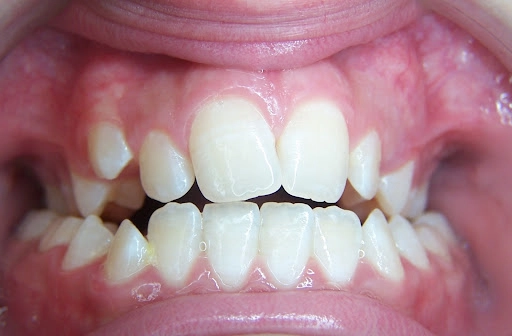
Patients who have a very narrow upper arch may also experience a constricted airway. This can lead to breathing difficulties and sleep problems (including sleep apnea and snoring). Expanding the upper jaw may increase the size of the airway and help to facilitate less restrictive breathing.
What is the Best Age to Get a Palate Expander?
It depends on the purpose of the expander. If the goal of the expander is to separate the bones of the upper palate to increase the size of the upper jaw, palatal expansion should be done before growth is finished.
When a child’s upper jaw is still growing the bones of the upper palate have not been completely fused yet. This gives the orthodontist the ability to safely separate the two palatal bones using a palate expander and get a wider upper jaw.
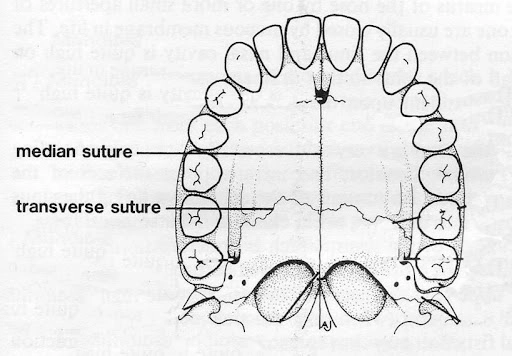
Once a child’s mouth has fully grown, the bones generally can not be separated by a standard palate expander. The expander will likely just move the teeth without moving the bones. That means as soon as the expander comes out, the separation may not last.
Generally speaking, the younger the child, the more effective palatal expansion is. Children as young as seven years old may get an expander. Palatal expansion may still be possible in older teenagers, but it is usually less reliable and less stable. Once someone is into their twenties, a standard palatal expander usually will not effectively expand the bones of the palate – at this point, a MARPE or SARPE may be the better alternative (these are discussed below).
This is one reason why orthodontists would like to evaluate all children by the age of seven. By doing an early evaluation we can identify children who may benefit from a palate expander and prescribe this appliance at the age when it is most effective.
Can Adults Get a Palate Expander?
Because most growth is finished by our late teens or early twenties, adults are usually not good candidates for a standard palate expander.
However, there is a new protocol, called a mini-screw assisted rapid palatal expansion (MARPE), that has proven effective in palatal expansion in young adults in their early twenties. . This technique uses small bone screws that are placed into the palatal bones followed by an expander that is activated and pushes against the bone screws to provide extra force (separating the palatal bones, rather than just the teeth).
This extra force may be able to separate the bones of the upper jaw even after the sutures have begun to close in early adulthood.
This is a relatively new technique, and research is still ongoing. As time goes on, we will better know exactly what age is most appropriate for this treatment. But, for some young adults who require palatal expansion, a MARPE may be the best possible treatment option out there.
The other treatment option that can help provide palate expansion in adults is called surgically assisted rapid palatal expansion (SARPE).
A SARPE works by having an oral surgeon first open the sutures of the upper jaw fuse. Then, a rapid palatal expander separates the bones of the upper jaw.
Watch the video below to see an animation of how a SARPE procedure is performed.
This technique is usually effective for adults of any age as the surgery helps to open the sutures which allows effective expansion of the upper jaw.
Does an Expander Work on the Lower Jaw?
The reason an expander is effective on the upper jaw is that the bones of the palate are separated by a suture that runs down the center. You can feel this line on the top of your mouth with your tongue. This line shows us where the palatal bones meet.
If the suture is still open, these bones can be separated.
The lower jaw, however, cannot be expanded. The lower jaw is one solid bone and does not have a suture running through the center of it.
There are some expansion appliances that may be used on the lower arch, but these appliances are not meant to expand the bones of the lower jaw. They simply help to expand and upright the lower teeth.
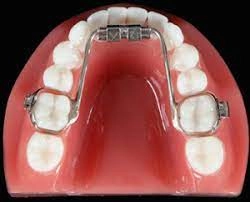
Because expanders placed on the bottom arch are not expanding the bones, the total amount of expansion that can be achieved on the lower jaw is limited.
Palate Expander Risks and Side Effects
Palate expanders are generally very safe and effective. They have been used by dentists and orthodontists for over 150 years! It is one of the oldest, and most studied orthodontic appliances in existence.
When used appropriately and prescribed at the proper age, there are very few risks associated with a palate expander. Most patients may experience minor discomfort in their teeth or some irritation to their tongue.
Some patients who are older may report feeling pressure in their upper jaw near the sides of their nose. This pressure is usually felt in older teens because the sutures of the upper jaw are a little more closed. With time, this pressure will usually go away as the suture opens and the jaw begins to expand.
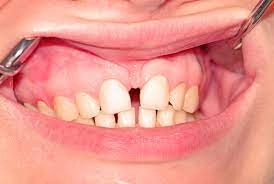
One common characteristic of a palate expander is a noticeable gap between the front teeth. This gap is a sign that the expander is working properly and the upper jaw bones are being separated as intended. This gap will be closed using braces with time and will not be there permanently.
Before and After Palate Expander
Below you will see several patients treated at our office using palate expanders. Notice how each example widened the upper arch, reducing the crossbite.

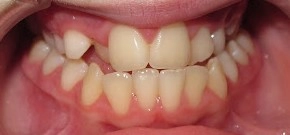

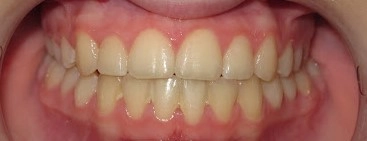

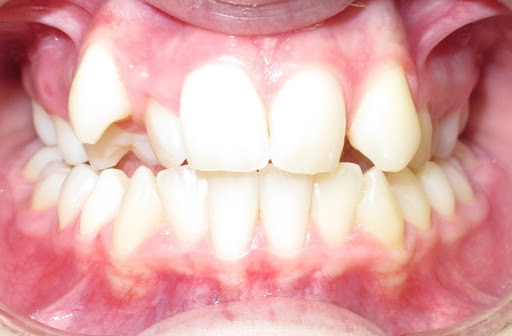

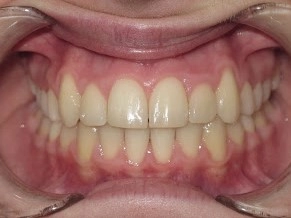
How Long Do I Need to Wear a Palate Expander?
The timeline for most patients who receive a palate expander will go like this:
The expander is activated every day (or as your doctor instructs) until there is adequate expansion. This usually will take 3-6 months based on how much expansion is needed.
Once the expansion is completed the appliance will stay in for up to six months to maintain the expansion and ensure that it is stabilized and that bone forms in between the palatal bones that are separated
In total most patients will have their expander in between 6-12 months. This may be done prior to placing braces on the teeth, or it can be done in conjunction with braces – depending on the patient’s needs.
What are the Costs of a Palate Expander?
If a palate expander is used in conjunction with braces treatment, the cost of the palate expander is generally included in the total cost. Some offices may charge an additional fee on top of the cost of the braces to help cover the cost of the expander.
If a child is receiving an expander without braces, the cost of the appliance will likely be separate.
Every orthodontist will likely have their own prices and fees. You can click here to see the cost of braces at Premier Orthodontics.
Does My Child Need A Palate Expander?
Your child may benefit from an palate expander if they have any of the following tooth or bite problems:
A crossbite
A narrow upper jaw
Excess crowding of the upper teeth
A constricted airway or other breathing problems
The best way to find out if a palate expander is appropriate for your child would be to see an orthodontist for a consultation.
If you live in the Phoenix, Arizona area, you can schedule a free consultation where one of our orthodontists can evaluate your child to determine if an expander is the appropriate treatment for them.
Orthodontist Consultations in Phoenix, Chandler, Maricopa, and Casa Grande
Premier Orthodontics has 6 locations providing braces and Invisalign in Phoenix, Chandler, Gilbert, Maricopa, Casa Grande, and Glendale as well as the surrounding areas.
Schedule your free consultation for braces or read our comprehensive guide to the cost of braces . (We are very transparent about our process and our pricing, as you’ll see in this guide.)

Dr. Tyler Coles
Dr. Tyler Coles joined his brother’s practice Premier Orthodontics in 2012 and since then, the practice has expanded to six locations and over 20,000 patient lives transformed throughout Arizona.
Dr. Coles has also co-authored two books with his brother ( “More Than Straight Teeth! A Parent’s Guide to Orthodontics” and “Start Smiling Now! What Every Parent Needs to Know About Orthodontics”).
Schedule a Free Braces Consultation For You or Your Child
Thinking about getting started with braces?
You can schedule a 100% free consultation and find out if clear braces the best choice for you.
Whether you’re thinking about braces for kids, braces for an adult, or even Invisalign, we’ve got you covered!
Click below to learn how you can get started with braces for as low as $89/month.


